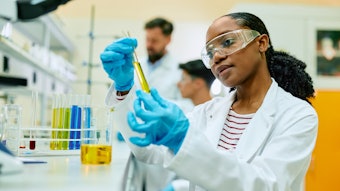
Research published in the journal Nature reveals how artificial intelligence (AI)-aided, computer-planned synthesis routes can produce naturally occurring compounds as effectively as human-planned routes. This is yet another example of how computerized technology can be utilized in cosmetics R&D.
According to the article abstract, several software platforms are now capable of autonomously plannig chemical synthesis routes but these programs "think" only one step at a time and have been limited to relatively simple targets—which could arguably be designed by human chemists without the aid of a computer. Furthermore, no algorithm has yet been able to design plausible routes to synthesize complex natural products, as these require far-sighted multistep planning.
See related: AI—Not a Goal, a Tool in Product Development
Here, the authors demonstrate that such computational synthesis planning is possible, provided that the program incorporates organic chemistry and data-based artificial intelligence routines augmented by causal relationships. This allows for "strategizing" over multiple synthetic steps.
In this work, the authors used a Turing-like test administered to synthesis experts and show that the routes designed by such a program are largely indistinguishable from those designed by humans. They also successfully validate three computer-designed syntheses of natural products in the laboratory: (−)-dauricine, (R,R,S)-tacamonidine and lamellodysidine A.
In light of the results, the authors concluded that expert-level automated synthetic planning of raw material synthesis is feasible, pending continued improvements to the reaction knowledge base and further code optimization.
See related: [video] Shiseido on AI to Predict Skin Needs









